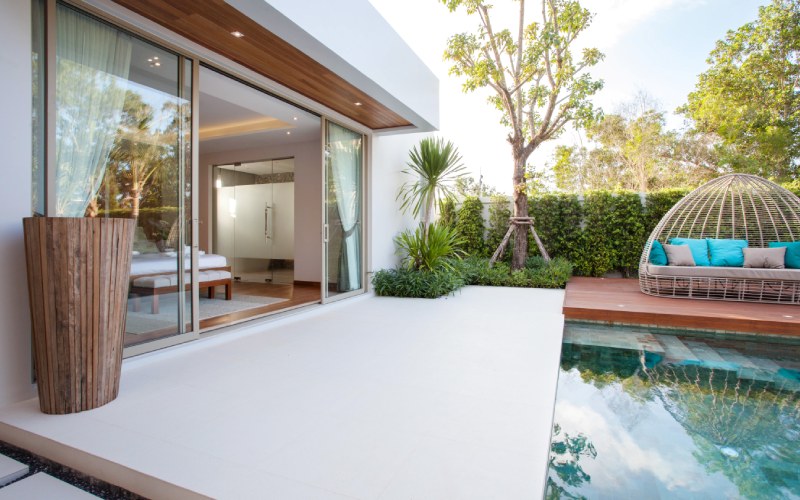There are different types of materials that can be used for pool covers, such as concrete, brick, stone slabs or wood. Concrete is a very common choice because it is affordable, safe, and easy to maintain. However, installing a concrete pool deck can be a complex task, which is why many people prefer wood, brick or stone tiles for their pool deck.
Wood decking is a good option as it is easy to install and relatively safe. This material does not heat up as quickly unlike stone or brick, so it has an additional advantage. It is recommended to place a protective layer on the wood to protect from elements such as rain or snow.
When you have decided on the deck material, you can proceed with the installation. Here we are going to give you several tips that will help you carry out this project successfully.
1. Obtain The Necessary Permits From Local Authorities
When installing a pool deck, you need to have a permit from your local building authority. It should be noted that some communities have strict regulations regarding the installation of solid surfaces over utility lines. This way you don’t have to worry about regulatory aspects with these permits.
2. Make Sure The Subgrade Is Stable
The subgrade, which is the surface of the foundation, must be checked to ensure that the pool deck is level and stable.
Consider surface gradients or irregular terrain features and level them with fill material. If this procedure is not performed you will have to deal with problems such as cracks and shifting on the surface. This should be checked from the beginning to avoid unnecessary delays later.
3. Build A Proper Foundation
Placing a foundation is the basis for having a well-built pool. In this regard, it must be ensured that the base is stable and filled with suitable base material.
The base must be prepared by filling it with sand or gravel for concrete, brick or stone materials. It is also important to prepare a concrete base for using stone tiles. In the case of wood, you need to make a base of beams for the floor.
4. Include A Slight Slope
At the time of installation, ensure that the surface has a slight slope for drainage purposes. The slope should face outward and have a slope of one inch per foot. This helps remove excess water or wash residue from returning to the pool.
5. Consider Adding Gutter Drains
If the pool area is very large or if the drains are located far from the pool, you can add a drainage channel somewhere on the deck. This allows excess water and debris to be collected and carried to the nearest drain without making a mess in your backyard.
6. Consider The Cost Of Curves
A curved deck design requires more work and time to install than a square or rectangular deck. This is because brick, stone or wood honeycombs must be cut and shaped according to curves. As a result, the cost of installing the platform will increase. It is important to prepare the budget for your project.

